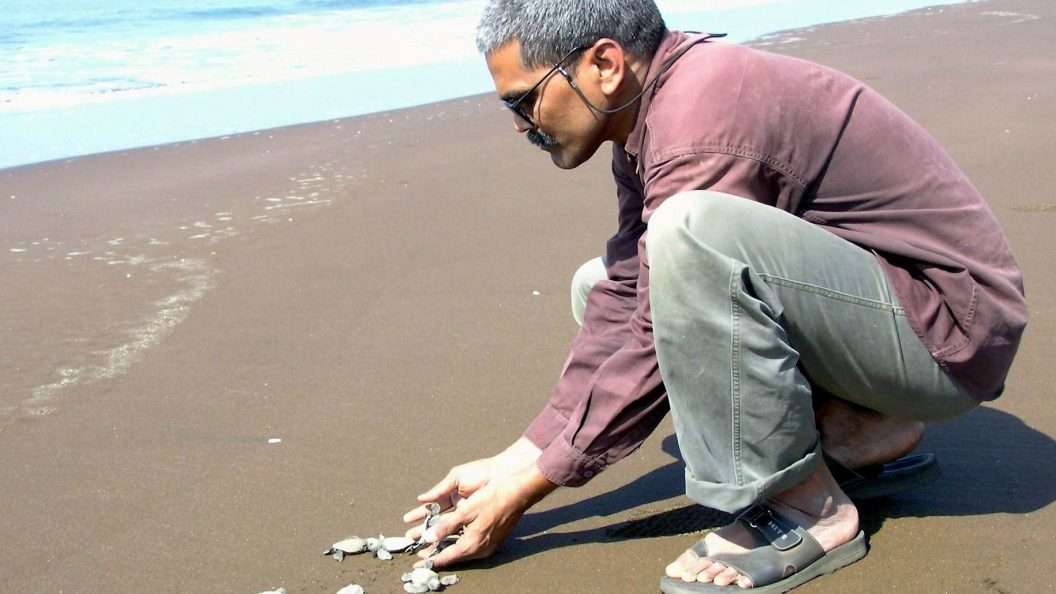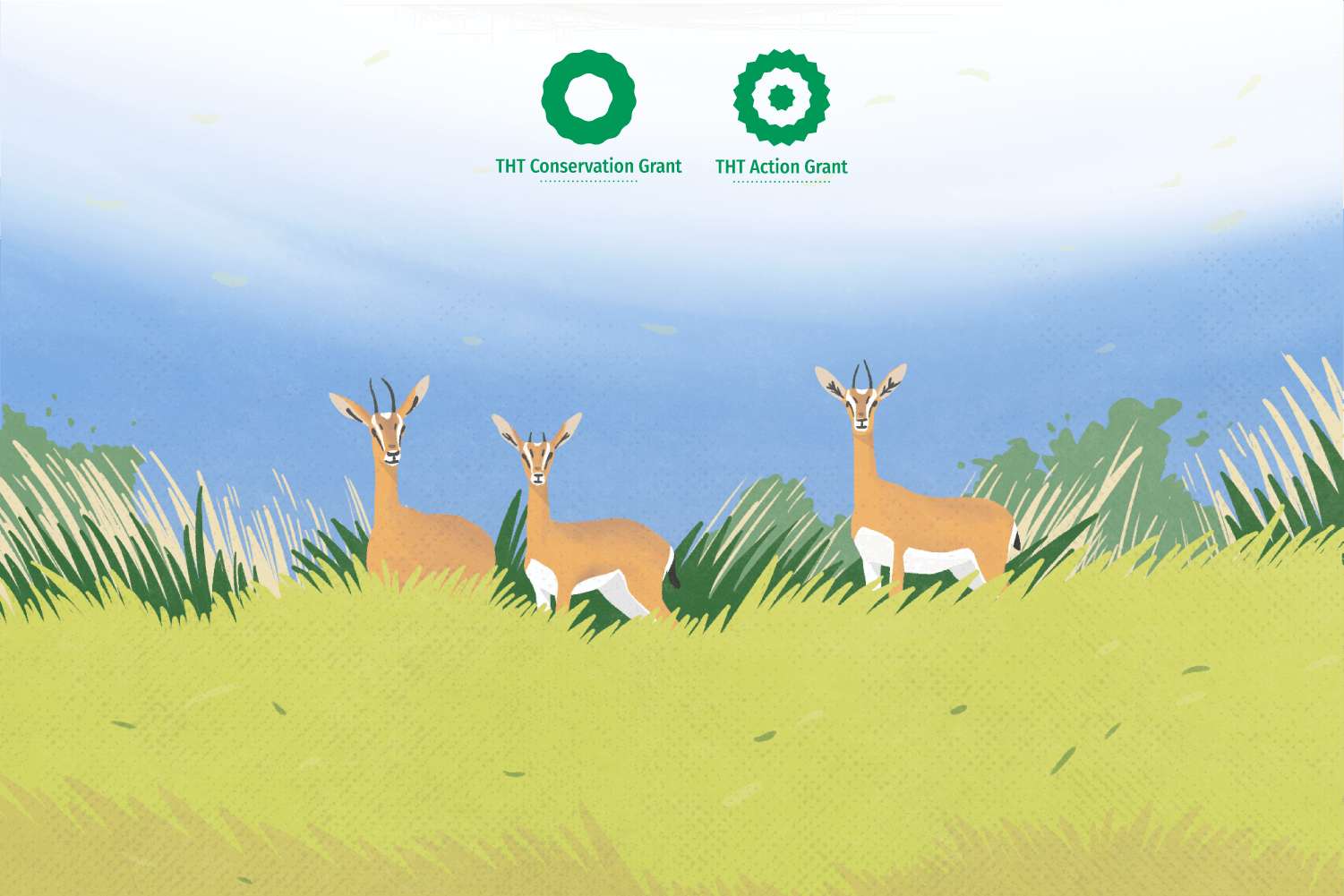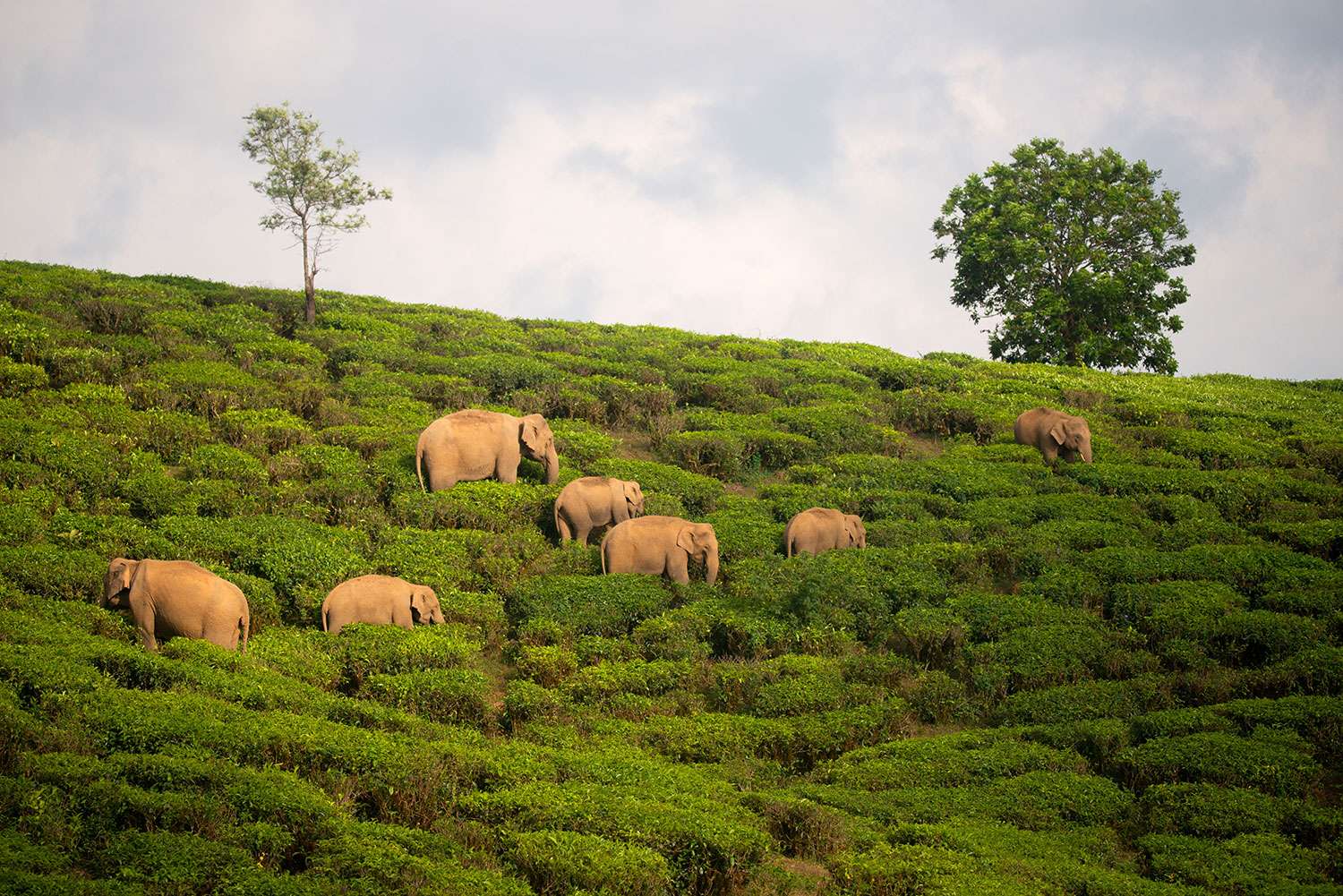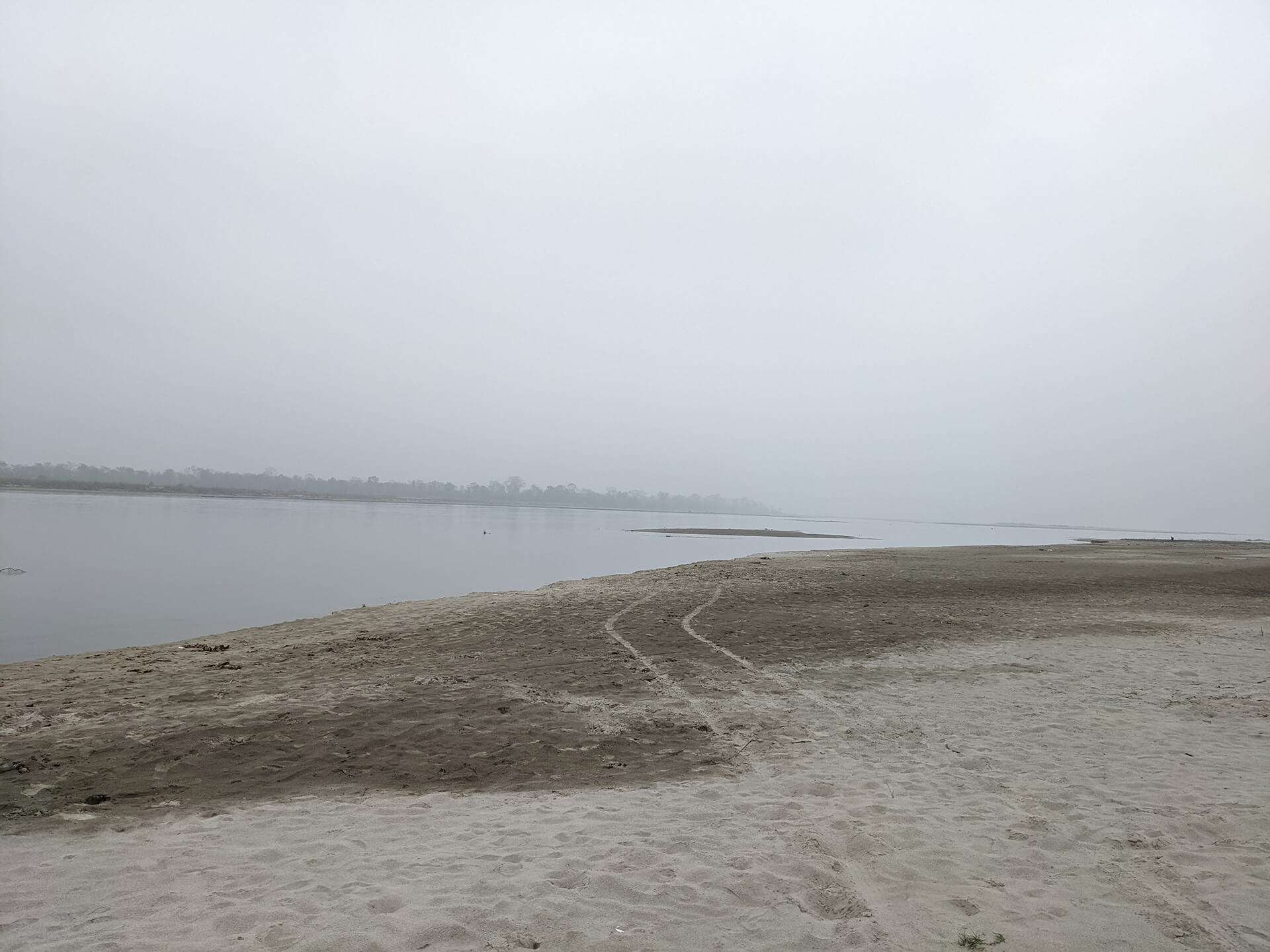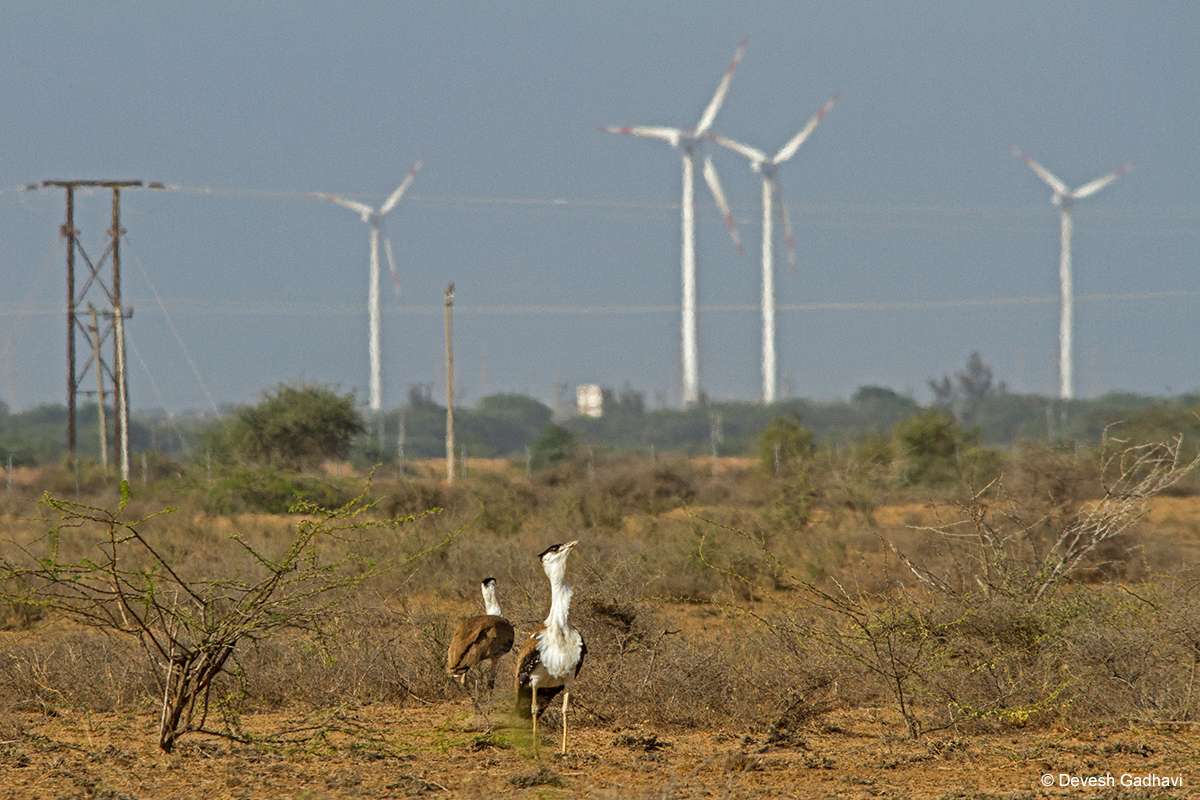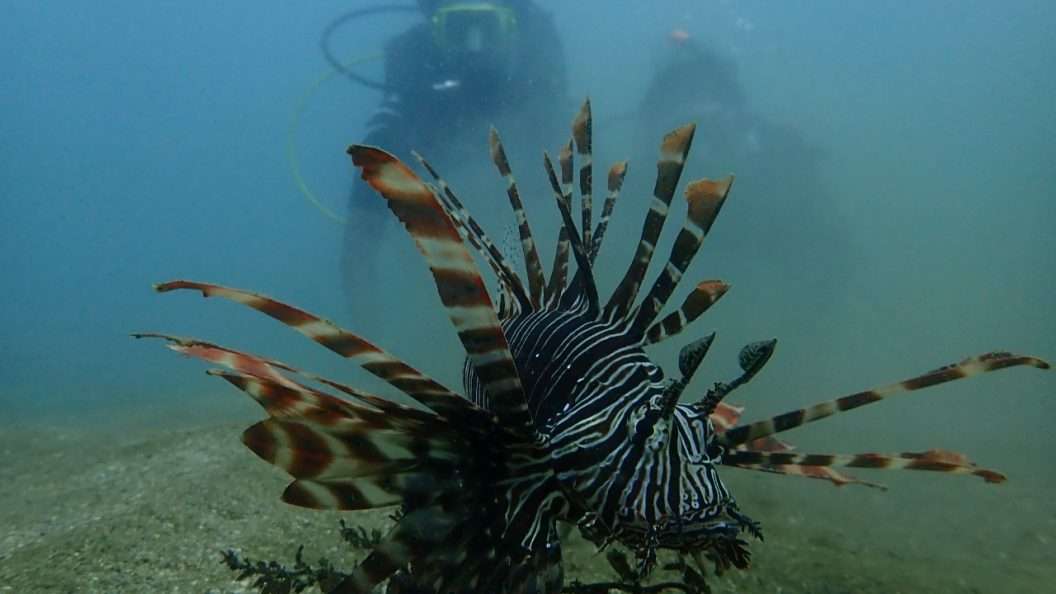Vishwas Katdare, lovingly known as Bhau, is the founder of Sahyadri Nisarga Mitra (SNM) – a Maharashtra-based NGO that works towards the conservation of wildlife in the Konkan region. What started as a ragtag group of committed birdwatchers in 1992, is now a celebrated NGO with three decades of conservation action under its belt!
Defined by a focus on the conservation of lesser-known species like vultures, pangolins, and marine turtles, SNM’s work has also transformed the lives of the local communities that live alongside them. We caught up with Bhau to hear about his fascinating journey.
The Habitats Trust (THT): Bhau, your journey is very unique – you were a professional kabaddi player before you retired and then dedicated your life to wildlife conservation. What set you off on this path?
Bhau Katdare: Between 1980-1990, I was a kabaddi player and this was a very popular sport in Maharashtra. After retiring, I somehow moved away from the usual practise of working just for money and wanted to do something different. I eventually realised that I wanted to work for nature. My father was a farmer but he loved reading National Geographic and wildlife magazines. He had all the knowledge of a naturalist and was even a member of the Bombay Natural History Society. All of this pushed me towards working for wildlife.
THT: Today, SNM is almost three decades old, and has consistently focussed on the conservation of lesser-known species like pangolins, turtles, white-bellied sea eagles and vultures. Why did you choose to focus on these species?
Bhau: When we started SNM, we were just birdwatchers and conducted some bird surveys too. When we completed our first survey of the white-bellied sea eagle, we realised that the species had barely been studied. While the Maharashtra government’s records claimed there were only four nests left in the region, we found 62 in our survey! We realised there’s such rich biodiversity in the Konkan region, and it’s easily accessible, yet not well studied. Thus, we decided that this would be our organisation’s focus.
THT: Communities are the cornerstone of SNM’s programmes, what have your interactions with local communities in the Konkan been like?
Bhau: In the beginning, we did not know much about the local communities and their knowledge about nature. But when we started surveys of the white-bellied sea eagle, we learned that they were extremely well-informed about biodiversity. For example, they wouldn’t know the English name of this species, but over time we heard them call the bird ‘sasan ghar’ or ‘kakan ghar’ which is the bird’s local name, and they knew how to locate its nest perfectly. They are the ones who live with nature and have deep knowledge of their environment.

An awareness camp with local children
THT: Through the ‘Olive Ridley Sea Turtle Hatchling Conservation Model’, SNM has succeeded in converting scores of poachers to conservationists. What were your biggest challenges and learnings from this initiative?
Bhau: When we started working on marine turtle conservation in 2003, little was known about the turtle ecology and behaviour here. We would often see sandpits and broken eggshells scattered on the beach, but if we asked local people, they wouldn’t tell us these were turtle eggshells. It took us months of coming back and inquiring until the local people realised we were genuinely interested, and finally, they told us all about the turtles arriving at the beach for mass-nesting, swimming back to the sea in big numbers, as well as the process of poaching, selling and consuming turtle eggs.
That’s when we thought of starting the Velas Turtle Festival – a nature-based tourism initiative for visitors to come experience the culture of Velas [a coastal village in Ratnagiri district, Maharashtra] and view the fascinating phenomena of turtle mass-nesting and hatching. We convinced locals to work for this cause instead of poaching and assured them they would earn more from this. They were initially hesitant, but once the programme gained traction with funds coming in and their work was appreciated by visitors, they were on board. Over five years, we have extended this program across 700km of the Konkan coast in around 80 villages.
THT: SNM has also worked extensively to highlight the plight of the pangolin in India. What are three facts about pangolins that everyone should know?
Bhau: Firstly, the pangolin is the most trafficked animal in the world, and is very heavily poached for the global illegal wildlife trade due to its perceived health benefits in Traditional Chinese Medicine. This is also why it is critically endangered. Second, the pangolin feeds on ants and termites, so it controls the populations of these pests and is a farmer’s friend. Lastly, the pangolin is a slow-moving animal and may seem shy and helpless, but they have a strong defence mechanism. Their scales are so hard that even bullets can’t easily go through them. They curl up and become a ball, and it is almost impossible to hurt them in this position.

An Indian pangolin walks by.
THT: SNM also works to involve rural kids in biodiversity documentation. Could you tell us about this programme?
Bhau: We implemented this programme over seven days through 20 schools, and it was a truly wonderful experience. We provided three camera traps to 8th and 9th standard students, and trained them in handling. We would encourage them to place the camera traps near their schools and villages where animals are visible. Together they documented almost 3,50,000 images from the three cameras, including tigers, pangolins, dholes and deer! Two students from the group have also said that they want to pursue a career in wildlife conservation and I was delighted to hear that.
THT: Could you share an experience from your time in the field that left a lasting impact on you?
Bhau: When we started working on turtle conservation in 2003, we requested the local communities to help us collect eggs for ex-situ conservation in Velas. We had around 20-30 protected nests and when the hatchlings first started emerging, the entire village quickly gathered around to see them make their way out to the ocean. An elderly man from the village came to us and said that since his childhood, he had only collected these eggs, but this was the first time he was seeing young turtles hatch and crawl to the ocean. He said it made him want to support our work – I will never forget that!


